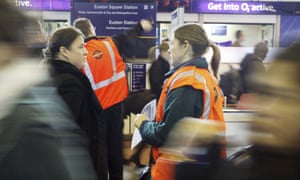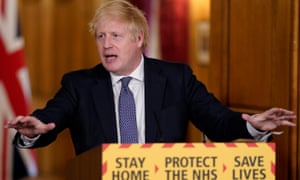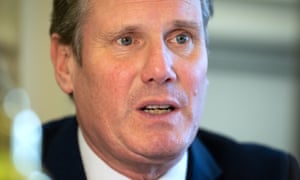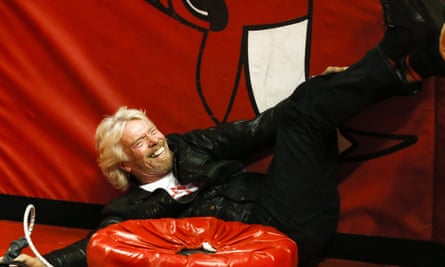Critics claim Matt Hancock has accelerated dismantling of state healthcare
Juliette Garside and Rupert Neate Mon 4 May 2020 THE GUARDIAN
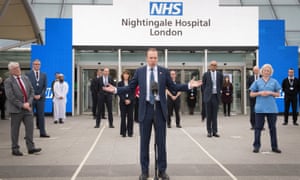
Matt Hancock at the opening of the NHS Nightingale hospital in London. The consultancy firm KPMG coordinated its setting up. Photograph: Stefan Rousseau/PA
The government is using the coronavirus pandemic to transfer key public health duties from the NHS and other state bodies to the private sector without proper scrutiny, critics have warned.
Doctors, campaign groups, academics and MPs raised the concerns about a “power grab” after it emerged on Monday that Serco was in pole position to win a deal to supply 15,000 call-handlers for the government’s tracking and tracing operation.
They said the health secretary, Matt Hancock, had “accelerated” the dismantling of state healthcare and that the duty to keep the public safe was being “outsourced” to the private sector.
The government is using the coronavirus pandemic to transfer key public health duties from the NHS and other state bodies to the private sector without proper scrutiny, critics have warned.
Doctors, campaign groups, academics and MPs raised the concerns about a “power grab” after it emerged on Monday that Serco was in pole position to win a deal to supply 15,000 call-handlers for the government’s tracking and tracing operation.
They said the health secretary, Matt Hancock, had “accelerated” the dismantling of state healthcare and that the duty to keep the public safe was being “outsourced” to the private sector.
In recent weeks, ministers have used special powers to bypass normal tendering and award a string of contracts to private companies and management consultants without open competition.
Deloitte, KPMG, Serco, Sodexo, Mitie, Boots and the US data mining group Palantir have secured taxpayer-funded commissions to manage Covid-19 drive-in testing centres, the purchasing of personal protective equipment (PPE) and the building of Nightingale hospitals.
Now, the Guardian has seen a letter from the Department of Health to NHS trusts instructing them to stop buying any of their own PPE and ventilators.
From Monday, procurement of a list of 16 items must be handled centrally. Many of the items on the list, such as PPE, are in high demand during the pandemic, while others including CT scanners, mobile X-ray machines and ultrasounds are high-value machines that are used more widely in hospitals.
Centralising purchasing is likely to hand more responsibility to Deloitte. As well as co-ordinating Covid-19 test centres and logistics at three new “lighthouse” laboratories created to process samples, the accounting and management consultancy giant secured a contract several weeks ago to advise central government on PPE purchases.
The firm said it was providing operational support for the procurement process of PPE from existing and new manufacturers, but declined to comment further.
“The government must not allow the current crisis to be used as cover to extend the creeping privatisation of the NHS,” said Rachel Reeves, the shadow chancellor of the Duchy of Lancaster.
“The process for the management and purchase of medical supplies must be open, transparent and subject to full scrutiny. Deloitte’s track record of delivering PPE to the frontline since this virus began is not one of success and taking more decision-making authority from NHS managers and local authorities shifts power further from the frontline.”
Tony O’Sullivan, a retired paediatrician who co-chairs the campaign group Keep Our NHS Public, said this was a “dangerous time” for the NHS, and that the “error-ridden response” from government had exposed a decade of underfunding.
“Now, rather than learning from those errors they are compounding them by centralising decision-making but outsourcing huge responsibility for the safety of the population to private companies,” said O’Sullivan.
Allyson Pollock, the director of the Newcastle University Centre for Excellence in Regulatory Science, said tasks including testing, contact tracing and purchasing should be handled through regional authorities rather than central government.
“We are beginning to see the construction of parallel structures, having eviscerated the old ones,” she said. “I don’t think this is anything new, it just seems to be accelerated under Matt Hancock. These structures are completely divorced from local residents, local health services and local communities.”
Friday’s letter, signed by two officials from the Department of Health and Social Care, says that from Monday key equipment will be purchased through a procurement team comprising hundreds of staff from the government’s commercial function and other departments.
Global demand for equipment has been “unprecedented”, according to the letter, and it is therefore “vital that the UK government procures items nationally, rather than individual NHS organisations compete with each other for the same supplies”.
Trusts are told to flag any purchases already in progress so that these can be taken over by the central team and put into a central pot. “The national team can help you to conclude the deal, reimburse you, and manage the products through the national stocks.”
In a separate email, sent from NHS England on Saturday, trusts have been instructed to carry out a daily stock check from the beginning of this week. They must report down to the nearest 100 their stores of 13 types of protective equipment, including gloves, aprons, masks, gowns and eye protection. The information is being gathered by Palantir, a data processing company co-founded by the Silicon Valley billionaire Peter Thiel.
The information will be used to distribute equipment to those trusts most in need, and in some cases move stock from one hospital to another.
A purchasing manager, speaking anonymously, said hospitals were concerned they might be forced to hand over stock and then run out before it could be replaced. “The lead time on some of these orders is 90 days,” said the manager. “Centrally, there is nobody who is able to deliver things more quickly. What this is going to do is force people to hide what they’ve got.”
“This coronavirus pandemic is being used to privatise yet more of our NHS against the wishes of the public, and without transparency and accountability,” said Cat Hobbs, director of campaign group We Own It. “This work should be done within the NHS. It shouldn’t be outsourced.”
“This is not the time for a power grab,” said the Labour MP Rosie Cooper, who sits on the health and social care committee, which is conducting an inquiry into the management of the outbreak. “Whatever contracts are awarded they have got to have a sunset clause. Three months, six months, it has got to be shown to be cost effective for it to continue after a certain date,” she said.
The Department of Health was contacted for comment.
Deloitte, KPMG, Serco, Sodexo, Mitie, Boots and the US data mining group Palantir have secured taxpayer-funded commissions to manage Covid-19 drive-in testing centres, the purchasing of personal protective equipment (PPE) and the building of Nightingale hospitals.
Now, the Guardian has seen a letter from the Department of Health to NHS trusts instructing them to stop buying any of their own PPE and ventilators.
From Monday, procurement of a list of 16 items must be handled centrally. Many of the items on the list, such as PPE, are in high demand during the pandemic, while others including CT scanners, mobile X-ray machines and ultrasounds are high-value machines that are used more widely in hospitals.
Centralising purchasing is likely to hand more responsibility to Deloitte. As well as co-ordinating Covid-19 test centres and logistics at three new “lighthouse” laboratories created to process samples, the accounting and management consultancy giant secured a contract several weeks ago to advise central government on PPE purchases.
The firm said it was providing operational support for the procurement process of PPE from existing and new manufacturers, but declined to comment further.
“The government must not allow the current crisis to be used as cover to extend the creeping privatisation of the NHS,” said Rachel Reeves, the shadow chancellor of the Duchy of Lancaster.
“The process for the management and purchase of medical supplies must be open, transparent and subject to full scrutiny. Deloitte’s track record of delivering PPE to the frontline since this virus began is not one of success and taking more decision-making authority from NHS managers and local authorities shifts power further from the frontline.”
Tony O’Sullivan, a retired paediatrician who co-chairs the campaign group Keep Our NHS Public, said this was a “dangerous time” for the NHS, and that the “error-ridden response” from government had exposed a decade of underfunding.
“Now, rather than learning from those errors they are compounding them by centralising decision-making but outsourcing huge responsibility for the safety of the population to private companies,” said O’Sullivan.
Allyson Pollock, the director of the Newcastle University Centre for Excellence in Regulatory Science, said tasks including testing, contact tracing and purchasing should be handled through regional authorities rather than central government.
“We are beginning to see the construction of parallel structures, having eviscerated the old ones,” she said. “I don’t think this is anything new, it just seems to be accelerated under Matt Hancock. These structures are completely divorced from local residents, local health services and local communities.”
Friday’s letter, signed by two officials from the Department of Health and Social Care, says that from Monday key equipment will be purchased through a procurement team comprising hundreds of staff from the government’s commercial function and other departments.
Global demand for equipment has been “unprecedented”, according to the letter, and it is therefore “vital that the UK government procures items nationally, rather than individual NHS organisations compete with each other for the same supplies”.
Trusts are told to flag any purchases already in progress so that these can be taken over by the central team and put into a central pot. “The national team can help you to conclude the deal, reimburse you, and manage the products through the national stocks.”
In a separate email, sent from NHS England on Saturday, trusts have been instructed to carry out a daily stock check from the beginning of this week. They must report down to the nearest 100 their stores of 13 types of protective equipment, including gloves, aprons, masks, gowns and eye protection. The information is being gathered by Palantir, a data processing company co-founded by the Silicon Valley billionaire Peter Thiel.
The information will be used to distribute equipment to those trusts most in need, and in some cases move stock from one hospital to another.
A purchasing manager, speaking anonymously, said hospitals were concerned they might be forced to hand over stock and then run out before it could be replaced. “The lead time on some of these orders is 90 days,” said the manager. “Centrally, there is nobody who is able to deliver things more quickly. What this is going to do is force people to hide what they’ve got.”
“This coronavirus pandemic is being used to privatise yet more of our NHS against the wishes of the public, and without transparency and accountability,” said Cat Hobbs, director of campaign group We Own It. “This work should be done within the NHS. It shouldn’t be outsourced.”
“This is not the time for a power grab,” said the Labour MP Rosie Cooper, who sits on the health and social care committee, which is conducting an inquiry into the management of the outbreak. “Whatever contracts are awarded they have got to have a sunset clause. Three months, six months, it has got to be shown to be cost effective for it to continue after a certain date,” she said.
The Department of Health was contacted for comment.
Outsourcing
Testing centres
Contracts to operate drive-through coronavirus testing centres were awarded under special pandemic rules through a fast-track process without open competition. The contracts, the value of which has not been disclosed, were granted to accountants Deloitte, which is managing logistics at a national level. Deloitte then appointed outsourcing specialists Serco, Mitie, G4S and Sodexo, and the pharmacy chain Boots, to manage the centres.
Lab tests
A coalition of private companies and public bodies have come together to form Lighthouse Labs, to test samples in three centres in Milton Keynes, Cheshire and Glasgow. Deloitte is handling payroll, rotas and other logistics, working alongside pharmaceutical giants GlaxoSmithKline and AstraZeneca, as well as the army and private companies Amazon and Boots.
Nightingale hospitals
Dozens of private companies have won contracts to build, run and support the Nightingale hospitals. Consultancy firm KPMG coordinated the setting up of the first Nightingale at the ExCel centre in east London alongside military planners. Infrastructure consultants including Mott MacDonald and Archus also had roles in the project.
Outsourcing firm Interserve worked on the construction of the Birmingham Nightingale hospital at the NEC, and was awarded a contract to hire about 1,500 staff to run the Manchester Nightingale. G4S secured the contract to supply security guards for all the Nightingale hospitals.
Recruiting extra NHS and hospital staff
Capita, another outsourcing firm, was awarded a contract to help the NHS “vet and onboard thousands of returning nurses and doctors”.
PPE
The government appointed Deloitte to help it ramp up British production of protective equipment and source stocks from the UK and abroad. Some figures in the UK manufacturing industry have described the project as a “disaster” and accused Deloitte of pursuing factories in China – where prices have leapt and supply is tight due to huge global demand – rather than focusing on retooling UK factories to make more kit.
Clipper Logistics, a Yorkshire-based logistics and supply chain firm founded by the Conservative donor Steve Parkin, was awarded government contract to supply and deliver protective equipment to NHS trusts, care homes other healthcare workers.
I’m reading C0423-Letter to Procurement Leads - Centralising Procurement of PPE Other Supplies_ 1 May-2 on @Scribd #ReadMore https://www.scribd.com/document/459848689/C0423-Letter-to-Procurement-Leads-Centralising-Procurement-of-PPE-Other-Supplies-1-May-2
